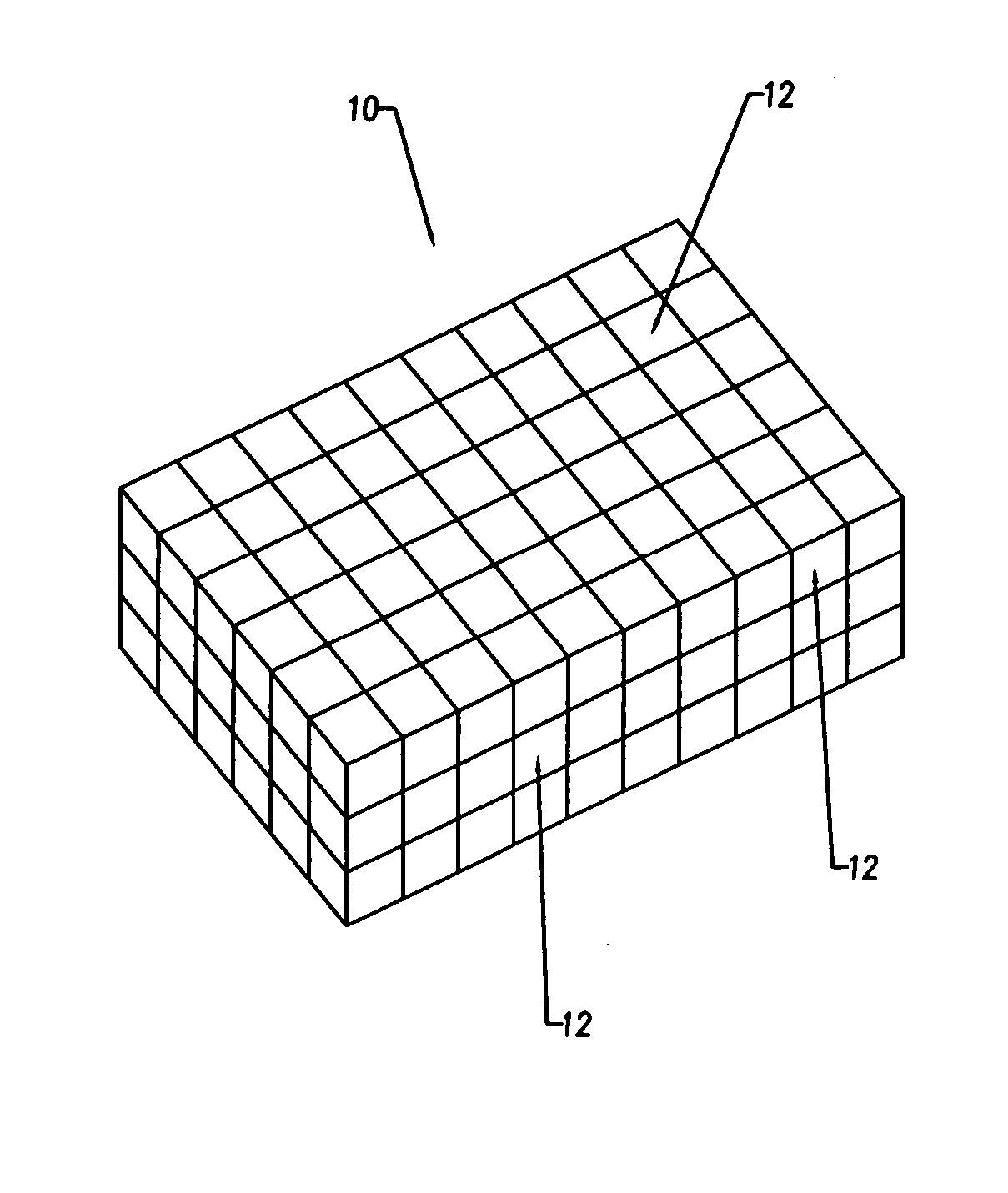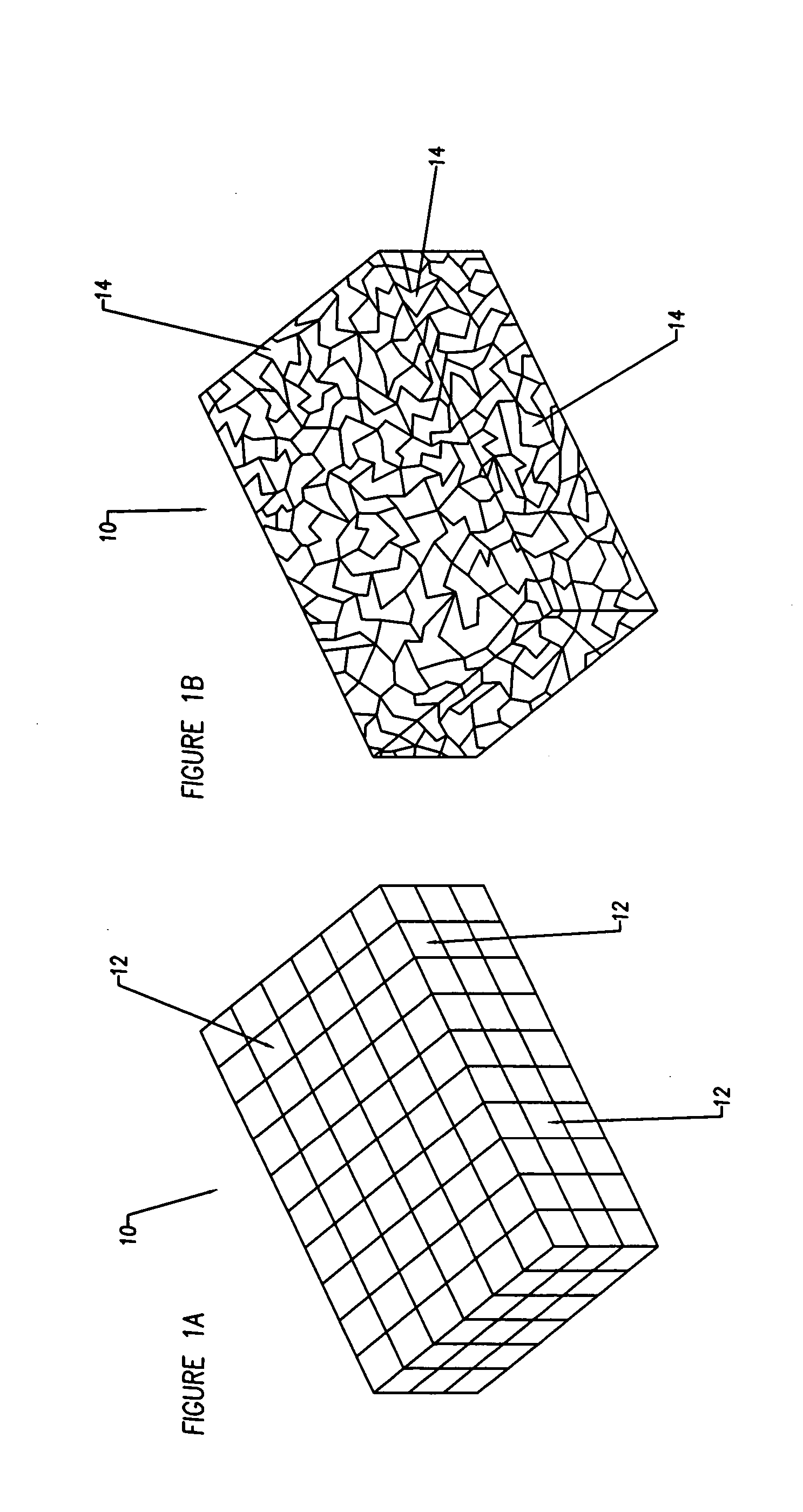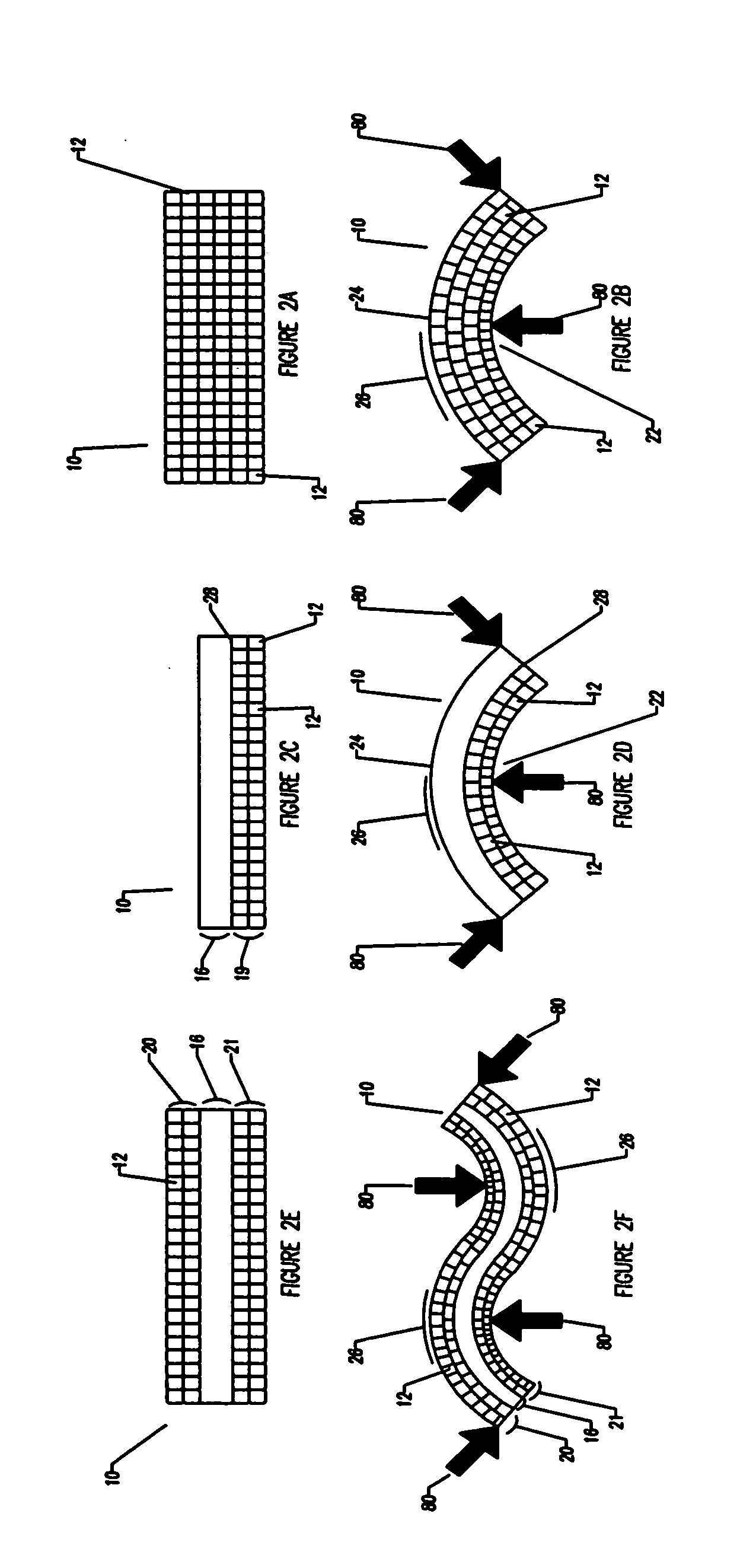Compliant osteosynthesis fixation plate
a technology of fixation plate and osteosynthesis, which is applied in the field of prosthetic implants, can solve the problems of metal plate system being miniaturized and more biocompatible, affecting and affecting the use of metal, so as to maintain the structural rigidity of the device, retain enough structural rigidity and strength, and alter the physical characteristics of the prosthesis
- Summary
- Abstract
- Description
- Claims
- Application Information
AI Technical Summary
Benefits of technology
Problems solved by technology
Method used
Image
Examples
Embodiment Construction
[0055] The object of the invention is an implantable prosthesis, constructed of a porous, resorbable, polymer material. The material comprising the prosthesis or device (as used herein, the terms prosthesis and device are used interchangeably) is a resorbable polymer that is biocompatible with the systems of a living being. The construction of the prosthesis is such that it is to be capable of easily being shaped. The shaping may occur in a variety of manners, such as by bending or compressing to conform to a desired shape without requiring any source of heating or special tools, and upon removal of the bending or shaping force, the prosthesis will remain in the exact shape, or nearly so; thus enabling the prosthesis to fit the unique contours of each patient. Despite being easily manipulated by hand, the prosthesis remains rigid and strong enough to lend structural support, and allows protection to the wound of a living being while the healing process occurs. The device has several...
PUM
| Property | Measurement | Unit |
|---|---|---|
| resorbable | aaaaa | aaaaa |
| lengths | aaaaa | aaaaa |
| biocompatible | aaaaa | aaaaa |
Abstract
Description
Claims
Application Information
 Login to View More
Login to View More - R&D
- Intellectual Property
- Life Sciences
- Materials
- Tech Scout
- Unparalleled Data Quality
- Higher Quality Content
- 60% Fewer Hallucinations
Browse by: Latest US Patents, China's latest patents, Technical Efficacy Thesaurus, Application Domain, Technology Topic, Popular Technical Reports.
© 2025 PatSnap. All rights reserved.Legal|Privacy policy|Modern Slavery Act Transparency Statement|Sitemap|About US| Contact US: help@patsnap.com



